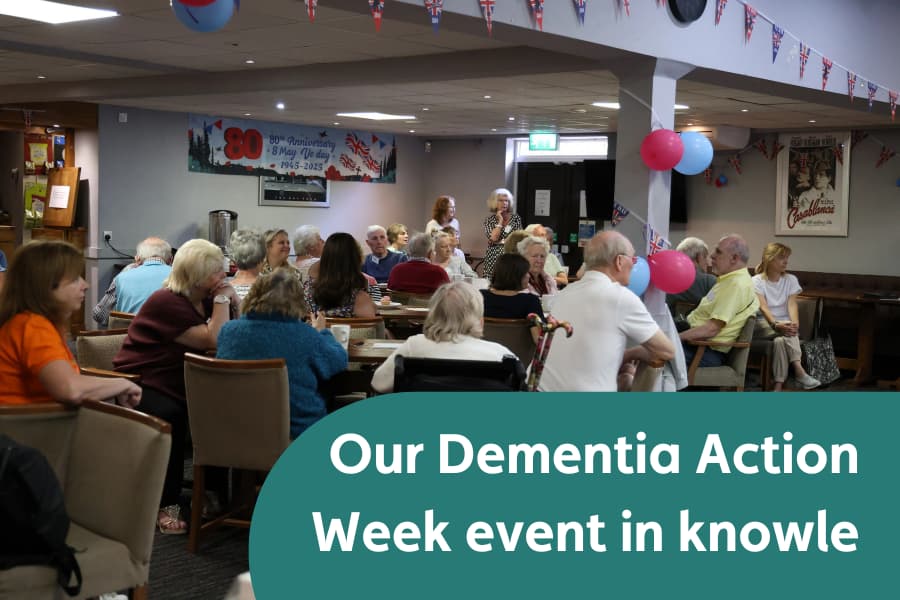Movement is important at every age, but it becomes especially valuable as we grow older. For people living with limited mobility, regular exercise can help ease stiffness, strengthen muscles, and support both body and mind. This guide looks at why movement matters, what activities are possible from a chair or bed, and how to gently encourage someone to get started—safely and at their own pace.
Why Movement Helps as We Get Older
As we age, muscles naturally weaken and joints can start to feel stiff or painful. Keeping active helps reduce these symptoms. It can also lower the risk of certain health conditions such as osteoporosis—especially in women going through or beyond menopause.
Even small, gentle exercises can help. Regular movement supports:
- Stronger muscles and better posture
- Improved balance and coordination
- Reduced aches, stiffness and pain
- Lower risk of falls
- Better circulation and digestion
- A lift in mood and mental wellbeing
These benefits apply whether the person is walking, stretching in a chair, or moving their arms and legs in bed.
Adapting Exercises to the Person
There’s no one-size-fits-all when it comes to physical activity. Some people might be able to manage a walk, a swim, or a tai chi class. Others might need exercises they can do from a seated position—or even lying down.
The important thing is to build a routine that suits the person’s ability and energy levels. Start slowly, keep it short, and give them time to get used to it. If they live with long-term health conditions or reduced mobility, it’s always best to get advice from a GP or Physiotherapist before starting anything new.
In-Chair and In-Bed Activities
For someone who finds it hard to get up and about, gentle exercises from a chair or bed can still offer real value. Some ideas include:
From a chair:
- Shoulder rolls
- Arm lifts or circles
- Marching the legs gently
- Ankle circles or heel taps
From bed:
- Toe points and ankle movements
- Arm stretches across the body
- Bending and straightening the knees
- Gentle neck turns
Repetition matters more than intensity. Regular, simple movements—even just 5 or 10 minutes at a time—can help the person stay more comfortable and mobile.
Encouraging Someone to Join In
Not everyone will feel keen to do exercises, especially if they’re in pain, tired, or unsure what’s involved. But a little encouragement can go a long way.
Try:
- Talking through the benefits clearly and simply
- Joining in together, if you can
- Putting on music they enjoy
- Making it part of a familiar routine
A warm, encouraging tone helps more than pressure. It’s about building confidence and helping them feel in control of what they can do.
Movement Supports Confidence and Mood
As well as improving strength and balance, movement can also boost confidence—especially for someone who’s had a fall or is nervous about walking. Over time, people often feel more steady and capable.
Exercise also helps with mental wellbeing. It releases endorphins—‘feel-good’ chemicals in the brain—that can help ease low mood or anxiety. It’s not just about staying fit, but feeling better too.
A Safe Start: Check First and Use Support
Before starting a new activity, always check with a health professional if the person has any medical conditions or reduced mobility. If doing any standing exercises, begin with a stable support like a chair or kitchen counter. As confidence grows, they may be able to reduce this—but safety always comes first.
Supporting Movement, Your Way
Every bit of movement helps. Whether it’s a full seated routine or a few stretches in bed, what matters most is consistency, comfort, and confidence. With patience and the right encouragement, staying active can feel achievable again—no matter someone’s age or ability.
FAQS: Addressing common questions around exercise and the elderly
Yes, but it needs to be adapted. Start small, focus on seated or supported movements, and check with a health professional before starting.
A little each day is ideal. Even short sessions can have long-term benefits if done regularly.
Don’t push. Try again another time, or find ways to make it more appealing—like playing music or doing it together.
Yes. Regular movement often improves sleep, reduces restlessness, and can lift someone’s mood.
Discover More Support & Information For Your Care Journey
Visit our Learning Centre for expert articles, helpful videos, in-depth guides, and answers to common questions - helping you make informed care decisions with confidence.
Explore NowJo joined Unique Senior Care as a Carer in 2011, transitioning from a nursing background. With 25 years of experience in health and social care, including mental health and children with disabilities, Jo has embraced numerous growth opportunities within the company.
Passionate about learning and development, Jo earned a Level 5 Diploma in this field and is committed to equipping teams with the skills needed for outstanding care.
Jo’s qualifications include advanced training in people handling, risk assessment, safeguarding, basic life support, first aid, health and safety, and dementia care. Jo has also completed numerous workshops and CPD courses, such as the SCIE’s Co-Production webinar.
These accomplishments reflect Jo’s dedication to fostering a culture of safety and excellence in care.


